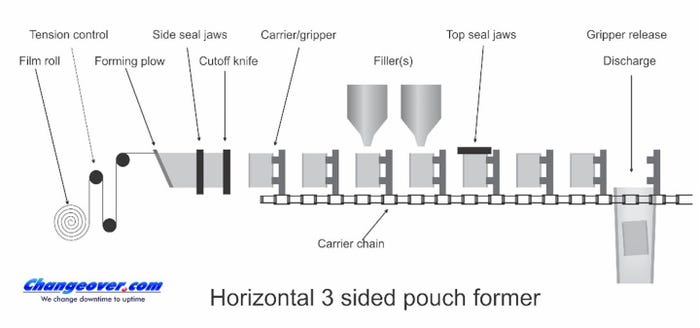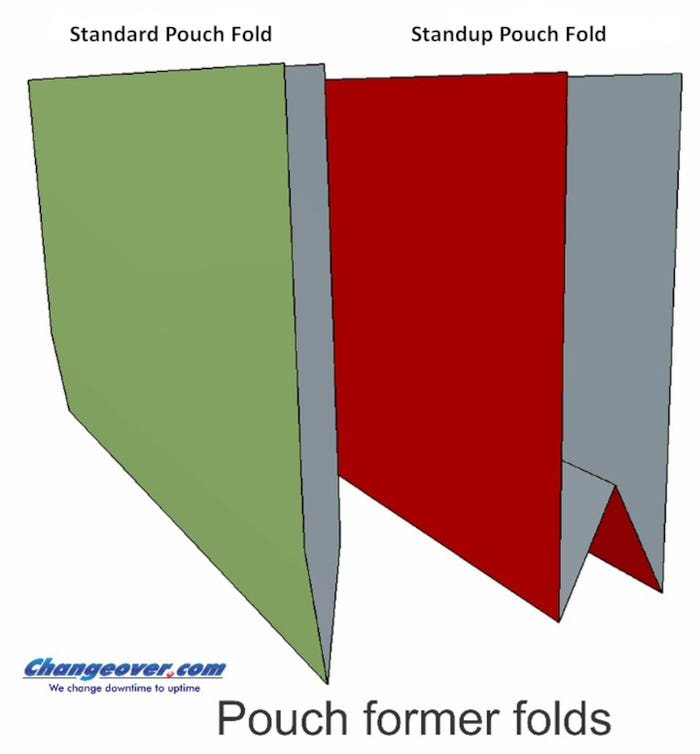Two types of horizontal form-fill-seal pouches share a similar operation through a packaging machine.
October 10, 2022

The three-sided pouch is a simple and elegant package. It is used for solids or liquids in sizes ranging from a few grams of salt to 10 pounds of chicken. Machines can be intermittent or continuous motion. Speeds can run from a few pouches per minutes to 400 or more.
This schematic shows how they are made.

Film unwinds through a series of tension control rollers. These maintain consistent tension to keep the film free from wrinkles. Proper tension control is critical to performance of any roll-fed machine.
The flat film passes over a “V” shaped guide that folds it in half, forming a trough at the bottom. If a standup pouch is desired, an additional plow is provided to create a bottom gusset. This pushes the center of the film up, forming a trough with a “W” profile.

After forming, sealing jaws seal between the pouches. The leading pouch is now sealed on two sides but remains open on the top. Grippers mounted on a carrier chain or turret grab the pouch as a cut-off blade cuts it free. The grippers carry the pouch to a filling station where suction cups pull it open. Most types of filler can be used depending on the product to be filled. Multiple filling stations and fillers may be used for mixed products.
Once filled, a horizontal jaw seals the top closed. Some pouches include a spout or other fitment. These are inserted at this station where shaped sealing jaws seal the film to the fitment.
It’s simple when you know.
Find out more about this and other flexible packaging. They’re all covered in Chapter 5 of my Packaging Machinery Handbook. Other chapters cover filling, labeling, coding, and all commonly used packaging machinery. Available on Amazon https://amzn.to/3kr4qj7
About the Author(s)
You May Also Like


